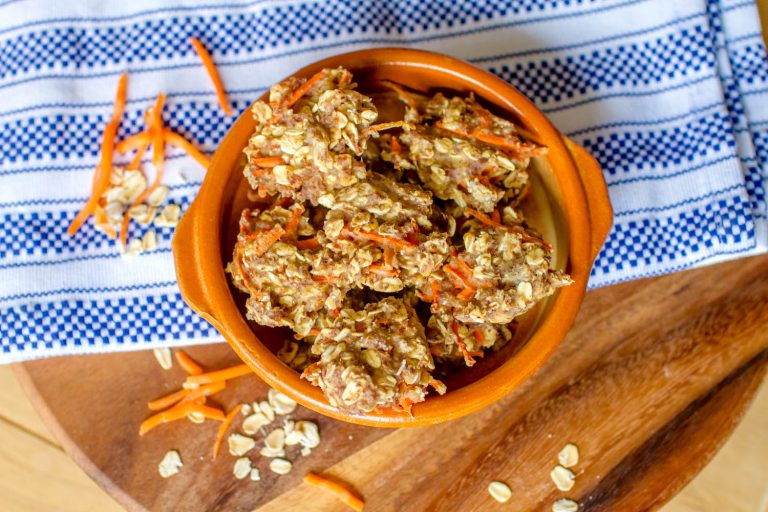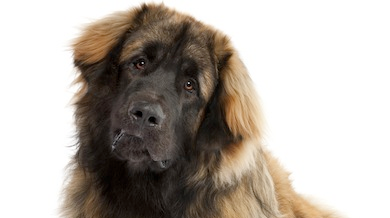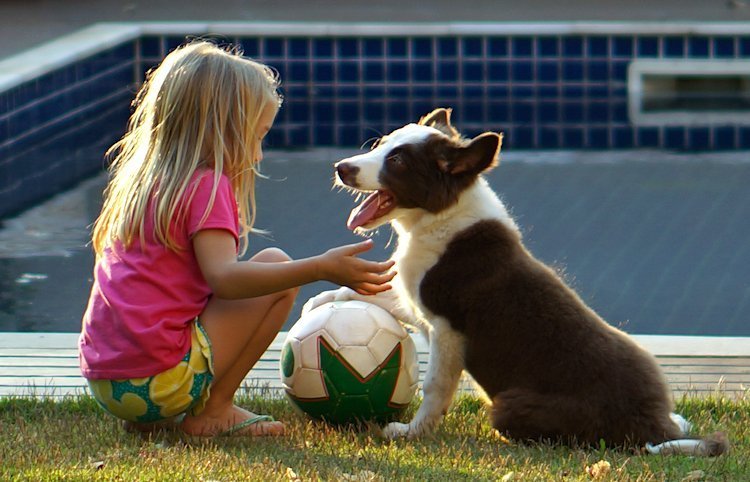The Ultimate New Puppy Checklist: Everything You Need to Know
Discover the essential new puppy checklist to ensure your furry friend’s smooth transition into your home. Get tips and advice to make this exciting journey easier.

- Essential Items for Your New Puppy Checklist
- 3 Things to Include in Your New Puppy Checklist Before Bringing Your Puppy Home
- Must-Have Supplies for Your New Puppy Checklist
- Your Puppy’s First 24 Hours: A New Puppy Checklist
- Your Puppy’s First Vet Appointment: What to Include in Your New Puppy Checklist
- Taking Steps to Raise the Best Dog: A New Puppy Checklist
- Frequently Asked Questions (FAQ)
- References
Don’t Guess When It Comes To Your Pet’s Care


Don’t Guess When It Comes To Your Pet’s Care
Essential Items for Your New Puppy Checklist
You just walked out of the animal shelter carrying a soft puffball that’s going to grow into a 60-pound dog in just one year.
You’ve got a list a mile long for your first pet store shopping trip. Before you head out, make sure these essentials are on your new puppy checklist:
- A comfortable bed and crate
- High-quality puppy food and bowls
- Puppy-safe toys and chews
- A collar, leash, and ID tags
And while that 10- or 15-year commitment is playfully gnawing on your fingertips, you’re making mental notes on how to start puppy training on the right foot.
No doubt about it—raising a puppy can be complicated. But with the right preparation and a solid new puppy checklist, there are ways to help ease the transition for Boomer.
3 Things to Include in Your New Puppy Checklist Before Bringing Your Puppy Home
Consistent Training Is Key
From consistent commands to expectations that don’t change with time, training relies on stability. It’s your job to decide at the beginning what commands you will use, what rules you’re going to enforce, and how to go about doing it all.
- Choose clear, consistent commands for your new puppy
- Ensure everyone in the household follows the same rules
- Avoid changing expectations as your puppy grows
“Make sure everyone in your household knows — and follows — the rules,” says Andrea Arden, author of Dog-Friendly Dog Training.
A new puppy will be drawn to every distraction around them. Don’t add to their confusion by being vague with your command training. They’re not going to understand what you want if you use multiple phrases for the same command. Choose just one — for example:
- “Down.”
- “Lie down.”
- “Go lie down.”
As Jonathan P. Klein, CDBC, CPDT-KA, recommends, make sure your entire family is on the same page with training.
Don’t change your expectations of your dog’s behavior as they get older. If you allow them on the couch when they’re a puppy, they’ll assume they’re allowed on the couch as an adult.
According to trainer/behaviorist Beth Jeffery, it’s “not fair to your dog to change the rules at different times and expect him to adapt just as easily as humans do.”
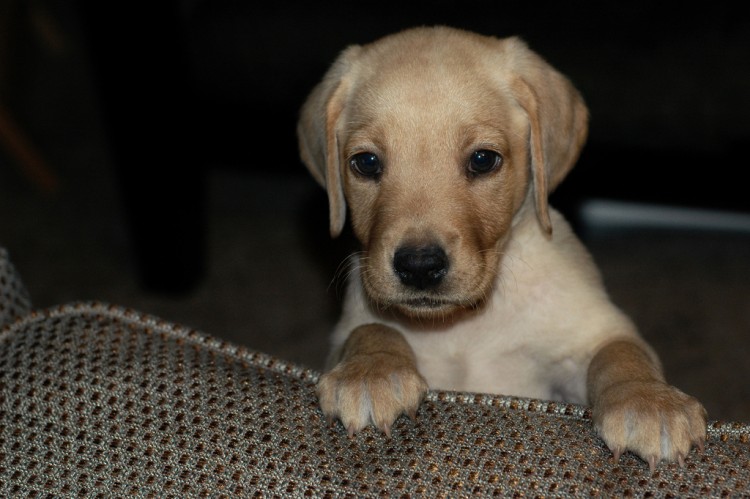
Socialize Your Puppy Safely
Socializing your new puppy while they’re young is a crucial part of your new puppy checklist. Proper socialization helps them deal with new situations calmly as they grow older.
However, socializing them with other dogs too early may actually be hazardous to your pup’s health.
Puppies go through a series of vaccinations that may not be complete until they reach about 5 months of age. Before that series of inoculations is finished, your puppy is more susceptible to the diseases that adult dogs rarely have to worry about.
The most common vaccinations are for:
- Canine distemper
- Hepatitis
- Leptospirosis
- Parainfluenza
- Parvovirus
- Coronavirus (though not the same coronavirus that causes COVID-19, which, as of this post’s publication, does not yet have an available vaccine for humans or dogs)
- Rabies
Some of these diseases can be fatal if contracted, so keep your pouncing puppy at a safe distance from other dogs until your vet gives you the green light for socialization.
Don’t Forget That Your Puppy Is a Dog
The novelty of having a puppy can lead you to make certain choices that you might not make otherwise — like letting them eat from your plate at the dinner table.
Treating your dog like a human is a common mistake. It will deprive them of many things that can make them healthy and happy. For instance, feeding your dog food from your plate can:
- Lead to unwanted behavior, such as begging or “dumpster diving” in the kitchen garbage.
- Cause obesity, which can lead to other health problems.
- Cause poisoning, especially if you aren’t very careful about what they eat.
Stick with a high-quality diet and supplement it with a limited number of dog treats for rewards as part of your new puppy checklist.
Watch this Australian Shepherd puppy get some positive reinforcement training:
Must-Have Supplies for Your New Puppy Checklist
Essential Toys for Your Puppy’s Development
Puppies are full of energy and curiosity, much like children, and they need constant stimulation to grow and learn. To keep your puppy engaged and support their development, make sure to include a variety of toys in your new puppy checklist:
- Plush toys: Soft and comforting, ideal for cuddling.
- Unstuffed toys: Great for puppies that love to chew but might tear apart stuffed toys.
- Balls: Perfect for fetching and rolling games.
- Latex or rubber toys: Durable and great for teething.
- Rope toys: Excellent for interactive play and tugging.
While your puppy may quickly choose a favorite, having a range of toys will keep them entertained and prevent boredom.
Choosing the Right Collar for Your Puppy
If your new puppy didn’t come with a collar and leash, selecting the right one is a crucial part of your new puppy checklist. Collars come in a variety of materials and styles, each with its own benefits:
Material options:
- Nylon: Lightweight and durable, a popular choice for growing puppies.
- Cotton: Soft and comfortable, ideal for puppies with sensitive skin.
- Rope: Strong and flexible, good for puppies that pull.
- Leather: Classic and durable, though less adjustable.
- Chain: Usually used for training, but can be heavy for young puppies.
Style options:
- Flat: Standard design, easy to put on and take off.
- Buckle: Secure and traditional, similar to a belt.
- Quick-release: Safe and convenient, especially for puppies prone to getting caught on things.
- Martingale: Offers more control without choking, good for training.
- Choke: Should only be used by experienced trainers to avoid injury.
- Prong: Not recommended for puppies, as improper use can cause harm.
For most new puppies, starting with an adjustable nylon collar is a good idea, as it can expand as your puppy grows. This ensures comfort and safety while they get used to wearing a collar.

Puppy Pads and Cleaning Supplies
Accidents will happen — that’s part of having a puppy, and it’s essential to be prepared. Along with constant vigilance, which is nearly impossible, it’s wise to include puppy pads in your new puppy checklist. These pads make cleanup much easier after those inevitable little accidents.
- Puppy pads: Convenient and absorbent, perfect for protecting your floors.
- Cleaning supplies: Stock up on enzyme-based cleaners to eliminate odors and prevent repeat accidents in the same spot.
Your new pup won’t instinctively know to eliminate on the pads initially, so you’ll need to work with them on that. Be prepared to clean up after them if they don’t quite make it to the pad. For more tips, check out our guide on house training your puppy.
Food and Treats
Puppy food is another obvious necessity that should be on your new puppy checklist. It’s best to start with the food your pup has been eating before they came to you, then gradually introduce the food you’ll be feeding them from now on.
- Puppy food: Choose a high-quality brand suited for your puppy’s breed and size.
- Treats: Ideal for early training, even young puppies can learn basic commands with a tasty morsel as motivation.
Treats not only help with training but also strengthen the bond between you and your new puppy. Remember to choose treats that are appropriate for your puppy’s age and dietary needs.

Squirt Bottle
If your new pup is gnawing on the baseboard again for the umpteenth time and you’re on the other side of the room, a quick jet of water from a squirt bottle may be just the thing to break their concentration. Adding a squirt bottle to your new puppy checklist can be a simple yet effective tool for curbing undesirable behavior.
- Squirt bottle: Use it sparingly to interrupt unwanted behavior without causing harm.
However, not everyone agrees on the use of a squirt bottle. It’s important to do your research and consider consulting a professional trainer to decide what’s best for your situation and your puppy’s well-being.
Camera
One day you’re going to blink, and your puppy will be full-grown—and all you’ll have to remind you of that 8-pound mound of fur are the photos that you took. So be sure to include a camera in your new puppy checklist and take plenty of pictures!
- Camera or smartphone: Capture those precious early moments that you’ll cherish forever.
For tips on taking great photos, check out these photography tips for dogs.

Your Puppy’s First 24 Hours: A New Puppy Checklist
Essential Preparations
When you bring your new puppy home, there are a few other things you may want to have on hand to ensure a smooth transition:
- A crate already set up: A comfortable, safe space for your puppy to rest.
- Pet-proofing around your home: Protect your home and your puppy by securing any hazardous areas. Learn more about pet-proofing.
- A house-training plan: Pups need to eliminate frequently, sometimes as often as every 30 minutes. Make sure you have a strategy in place, whether it’s frequent trips outside, puppy daycare, or a responsible dog walker.
- ID tags and licenses: Ensure your puppy is properly identified from day one.
It’s extremely important to make a vet appointment either on the first day or within the next few days. Even if your puppy appears healthy, an early vet visit allows you to gather your thoughts and questions. Most reputable rescue groups perform a vet check, but these can be cursory exams, and things can happen during transport.
For initial help, rely on resources from your vet’s office, your trainer, or your rescue group.
Naps, Naps, and More Naps
Your puppy will quickly wear out from all the excitement of discovering their new home on that first day. Like human babies, puppies tire quickly.
When you get home with your new pet, have a warm bed prepared and allow them to take a nap (or as many as they need) to process all these new changes.
Slow Introductions
When your puppy is awake and alert, let one person at a time handle them, and gradually introduce more people.
If you have children, it’s crucial to talk to them before bringing your puppy home. Explain the importance of being calm—no screaming, yelling, or running up at full speed. When you arrive, remind them gently: “Remember what we talked about; we don’t want to scare them.”
Strict Supervision
One of the most important supervision periods with your new pup is the first day. This is when your puppy-proofing is put to the test.
- Monitor your puppy: See if they manage to get into areas you hadn’t considered, such as closets or under furniture. Make any necessary adjustments.
- Teach house rules: Supervising them allows you to begin teaching the house rules. If your puppy starts chewing on shoes or tugging on the drapes, interrupt them and show them where their toys are. Praise them when they play with their toys.
Finally, accompany them outside—your puppy might run into another animal, eat a dangerous plant, or even run off. They may not respond to your calls if they don’t know their name or commands yet, so it’s important to stay close.
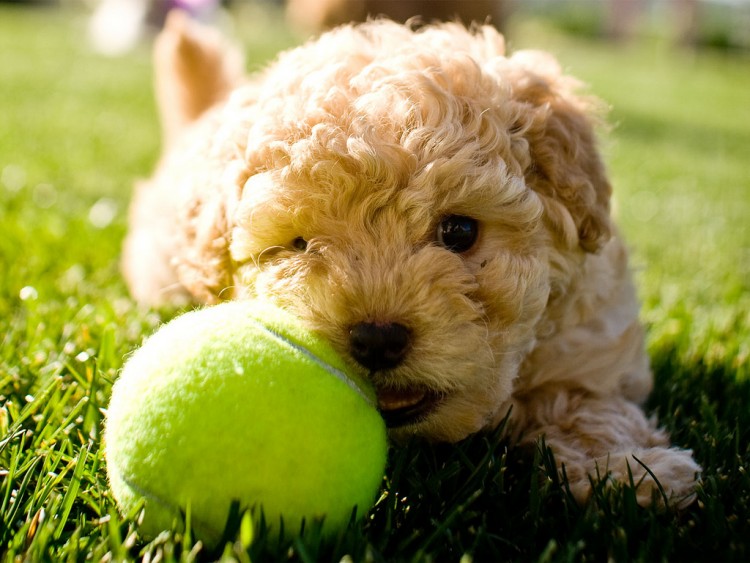
Your Puppy’s First Vet Appointment: What to Include in Your New Puppy Checklist
So you made your pup’s first vet appointment within the first 24 hours of bringing them home, and the big day has finally arrived! This vet visit is a crucial part of your new puppy checklist.
Bring All Necessary Paperwork
The most important thing to remember is to bring your puppy’s paperwork to the vet. This allows the vet to review your pup’s vaccination records and check if they’ve received heartworm or flea and tick preventive treatments.
- Arrive early or email the paperwork: If possible, email the paperwork before your appointment. This way, the office can start a file for your pup and carefully review their vaccine and medical history.
Consider Pet Insurance
Another important item to consider for your new puppy checklist is pet insurance. After adopting your puppy, it’s a good idea to explore insurance options. While your vet staff can assist with this, it’s helpful to do some research beforehand and come prepared with any questions. Learn more about pet insurance.
- Insurance from rescue groups: Good rescue groups usually provide some information on insurance. Often, your new pet is minimally covered for a short time, but consider buying your own policy soon for comprehensive coverage.
Keep Communication Open
You will likely have many questions during your puppy’s first month with you. Keep the lines of communication open with your vet and, if applicable, your rescue group.
- Vet technicians are a valuable resource: The technicians at your vet’s office are great resources for puppy care. They are always willing to help, so don’t hesitate to call them with questions. Learn more about the role of vet technicians.
Watch this French Bulldog expend energy and get totally tuckered out:
Taking Steps to Raise the Best Dog: A New Puppy Checklist
There’s no denying the excitement, joy, and hilarity that ensue when a four-legged tumbleweed with boundless energy takes over your home.
But if you want to raise the best dog possible, the hard work that comes with this goofy new addition is crucial. Following a comprehensive new puppy checklist will help ensure your puppy grows into a well-behaved and happy dog. Here are some key steps to include:
- Start training early: Establish consistent rules and routines from day one.
- Socialize your puppy: Gradually introduce them to new people, places, and other pets.
- Provide proper nutrition: Ensure your puppy is eating a balanced diet suited to their breed and size.
- Schedule regular vet visits: Keep up with vaccinations and preventive care.
By following these steps, you’ll be well on your way to raising the best dog possible.
Frequently Asked Questions (FAQ)
What to get for a new puppy checklist?
A new puppy checklist should include essentials like a crate, bed, food, toys, collar, leash, and ID tags.
What do you need for a new puppy checklist?
You need a new puppy checklist that covers basic supplies, grooming tools, training materials, and health essentials.
References
- “Canine Coronavirus Highly Pathogenic for Dogs.” Emerging Infectious Diseases. https://www.ncbi.nlm.nih.gov/pmc/articles/PMC3291441/.
- “Raising a Puppy: The First 24 Hours.” Embrace Pet Insurance. https://www.embracepetinsurance.com/waterbowl/article/raising-puppy-first-24-hours.
- “The 6 Mistakes Dog Owners Make That Can Turn Angels Into Demons.” Healthy Pets With Dr. Karen Becker.



